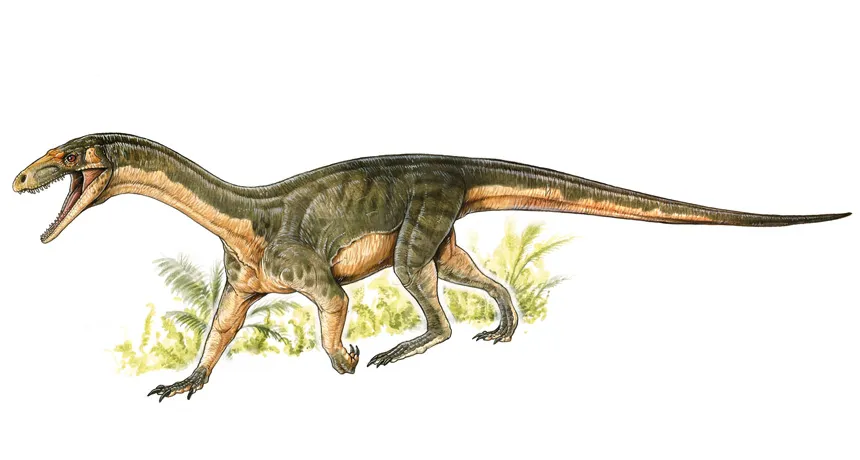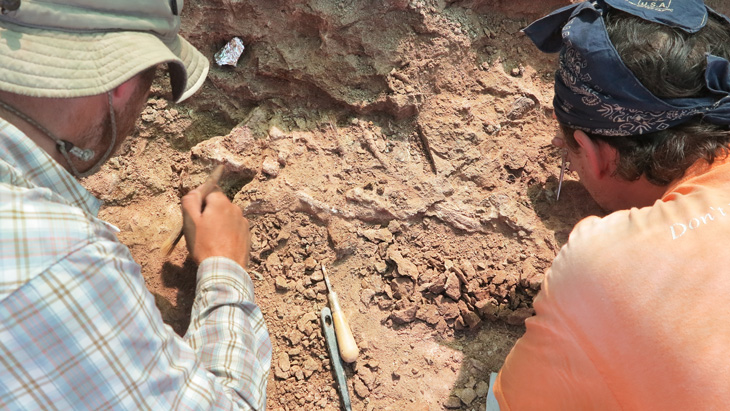Early dinosaur relative sported odd mix of bird, crocodile-like traits
Unusual museum specimen inspired search for more fossils

REPTILE REIMAGINED Unlike other known close dinosaur relatives, Teleocrater rhadinus (illustrated) walked on four feet instead of two and had an ankle bone like a crocodile’s.
Museo Argentino de Ciencias Naturales "Bernardino Rivadavia" (Buenos Aires, Argentina), artwork by Gabriel Lio








